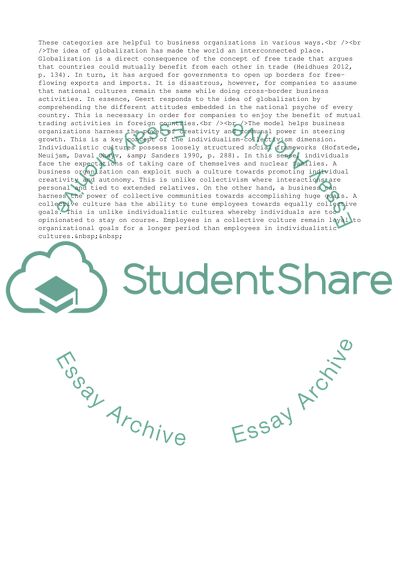Cite this document
(Usefulness of Hofstedes National Culture Model in Leading Business Coursework Example | Topics and Well Written Essays - 1500 words, n.d.)
Usefulness of Hofstedes National Culture Model in Leading Business Coursework Example | Topics and Well Written Essays - 1500 words. https://studentshare.org/management/1853468-the-usefulness-of-hofstedes-national-culture-model-in-understanding-and-leading-business-organizations-in-the-21st-century
Usefulness of Hofstedes National Culture Model in Leading Business Coursework Example | Topics and Well Written Essays - 1500 words. https://studentshare.org/management/1853468-the-usefulness-of-hofstedes-national-culture-model-in-understanding-and-leading-business-organizations-in-the-21st-century
(Usefulness of Hofstedes National Culture Model in Leading Business Coursework Example | Topics and Well Written Essays - 1500 Words)
Usefulness of Hofstedes National Culture Model in Leading Business Coursework Example | Topics and Well Written Essays - 1500 Words. https://studentshare.org/management/1853468-the-usefulness-of-hofstedes-national-culture-model-in-understanding-and-leading-business-organizations-in-the-21st-century.
Usefulness of Hofstedes National Culture Model in Leading Business Coursework Example | Topics and Well Written Essays - 1500 Words. https://studentshare.org/management/1853468-the-usefulness-of-hofstedes-national-culture-model-in-understanding-and-leading-business-organizations-in-the-21st-century.
“Usefulness of Hofstedes National Culture Model in Leading Business Coursework Example | Topics and Well Written Essays - 1500 Words”. https://studentshare.org/management/1853468-the-usefulness-of-hofstedes-national-culture-model-in-understanding-and-leading-business-organizations-in-the-21st-century.


